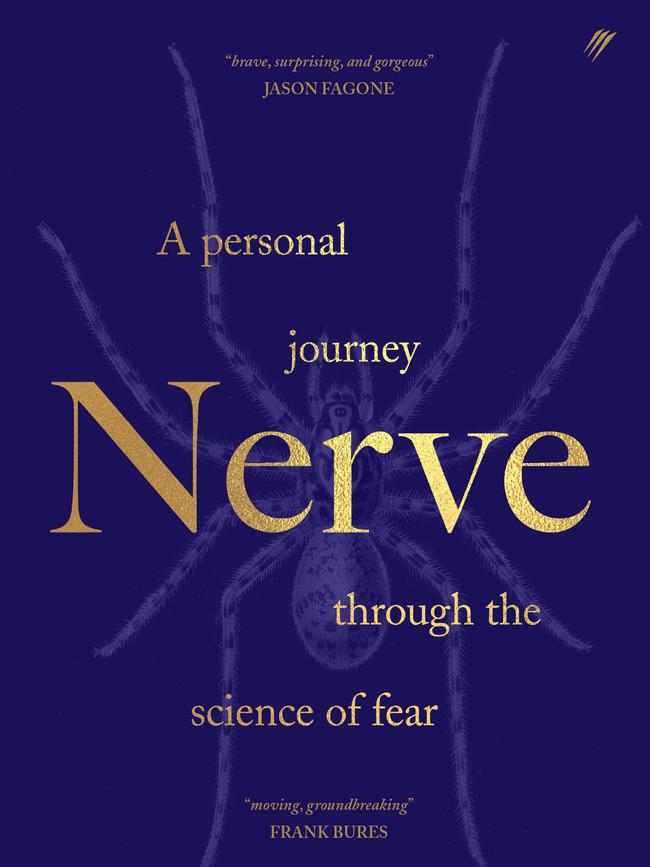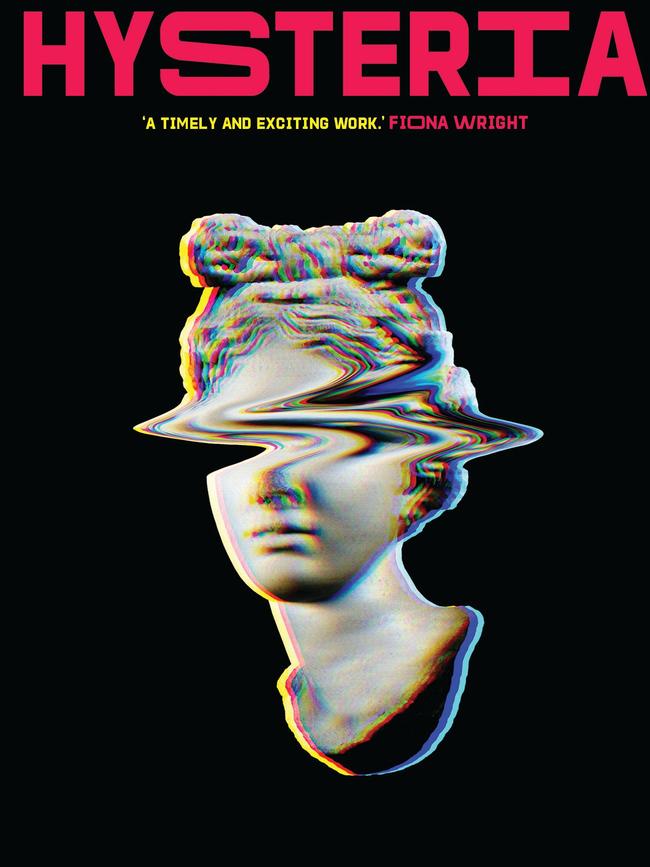Book reviews, Nerve: A Personal Journey Through the Science of Fear by Eva Holland and Hysteria by Katerina Bryant
To exist in a state of fear, we are told, is to settle for an impoverished version of ourselves. But to live a totally uninhibited life can be painful.

To exist in a state of fear, we are told, is to settle for an impoverished version of ourselves. Psychologists, meditation apps and Instagram memes enforce the idea that to reach our full potential we must overcome our corrosive worries and anxieties.
Hence the aphorisms: push beyond the fear; feel the fear and do it anyway; there is nothing to fear except the fear itself. But what does a life without fear look like?
Canadian journalist and writer Eva Holland offers an example in her contribution to the anxiety corpus, Nerve: A Personal Journey Through the Science of Fear.
One chapter is devoted to “Patient SM”, who suffers from a rare genetic condition called Urbach-Wiethe that has stripped her of her amygdala, a component of the brain’s temporal lobe that registers fear.
Holland notes that SM’s lack of fear “has isolated her from others, and has made her world smaller in many ways”. She is often hungry because she isn’t driven to eat. She is not great with finances as she lacks a fear of consequences. Men have abused her, she has had a gun held to her head and she has found herself in some Jerry Springer-style scraps with neighbours.
When SM meets someone she doesn’t hold back, often startling others and driving them away with her lack of inhibition. “Turns out the fear of rejection can be a useful social handrail,” Holland quips.
Such an uninhibited life is alien to Holland, who, since a series of childhood and post-adolescent traumas, has struggled to free herself from her fears.
Her list of fears is brief but she feels them hard: she is afraid of exposed heights (as a child she tumbled down an escalator) and this has caused panic attacks, most notably while ice climbing in British Columbia and while taking in the view from the top of the Duomo in Florence.
Several car accidents — four in total — have resulted in a debilitating fear of driving, as one might expect. And her greatest fear, the loss of her much-loved mother, comes true in 2015 when she dies from a stroke at the age of 60. Holland is pitched into a despair and bleakness that sees her oscillate between couch-bound depression and near-manic road trips.
She finds herself entertaining all of the usual dead-end solutions to grief, hoping that external changes will shift the feeling. Maybe she should take up ultra-marathon running? Maybe she should move to Afghanistan?

Instead, her mother’s death becomes the impetus for Holland to explore the role of fear in our lives, how traumas are formed and, most important for her, how to free herself from her own phobias.
This is a book for fellow travellers and anxiety sufferers rather than scientists. While Holland includes a significant amount of information on how the brain and body react to fear, as well as historical treatments for trauma and mental illness — including lobotomies and electric shock therapy — most readers will be familiar with this detail.
The real hook rests with Holland’s story, and she mostly retains the reader’s attention with her immersive journalism, attempting various treatments to cure her fear of driving and exposed heights, from eye movement desensitisation and reprocessing psychotherapy to taking part in a trial investigating the beta-blocker propranolol as a fear-reducing agent.
A chapter devoted to her white-knuckle experience of skydiving as part of her experimentation with exposure therapy is beautifully taut, showcasing her skills as a storyteller, as well as her bravery.
Katerina Bryant’s condition is as abstruse as Holland’s fears are commonplace. In her memoir, Hysteria, Adelaide-based Bryant charts her struggles with confounding chronic seizures that have no obvious genesis. We learn that these depersonalisation events, which are categorised as an acute feeling of disconnection and detachment from the world, are not uncommon in the population yet are poorly understood.
Bryant, who also suffers from depression and anxiety, begins to experience these discombobulating states with alarming frequency, sending her into the frustrating maze of psychiatric suites, hospital tests and desperate cure-seeking.
She also looks back in time to tell the stories of women in history who have suffered similarly yet lacked a voice, noting astutely that her illness, at the very least, is mercifully not compounded by the rank misogyny of yesteryear’s medical fraternity, which led to all sorts of extravagant theories as to the origins of “hysteria”.
Still, Bryant suffers in the dark. She is not sure whether her seizures are epilepsy or pseudoseizures, also known as PNES (psychogenic non-epileptic seizures), or the “the modern incarnation of hysteria”.

It is clear that writing about her illness is a form of release and therapy for Bryant. Yet this focus constrains the book. She takes a deeply personal approach to the subject matter and, while this is effective some of the time, it can be too insular.
Another weakness emerges in Bryant’s nomenclature for possible diagnoses. For example, she transposes the term PNES with the diagnostic category of “conversion disorder” without adequate explanation of their differences. The terms are often used interchangeably, but the reader may be left wondering.
There are flashes of assuredness in Bryant’s work, including her insightful analysis of the high cost of the mental health system and the struggles many women face in obtaining accurate diagnosis, support and treatment.
However, a broader analytical scope — drawing on disparate contemporary sources in addition to Bryant’s experience — as well as greater contextual information on terminology would have helped transform the book into a more significant contribution to the field of writing on mental illness.
Johanna Leggatt is a Melbourne-based critic and journalist. Nerve: A Personal Journey Through the Science of Fear by Eva Holland (Pantera Press, 272pp, $32.99); Hysteria by Katerina Bryant (NewSouth, 201pp, $29.99).






To join the conversation, please log in. Don't have an account? Register
Join the conversation, you are commenting as Logout